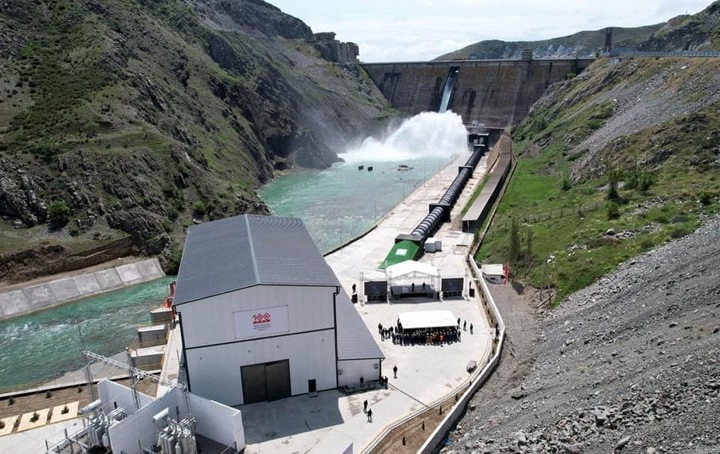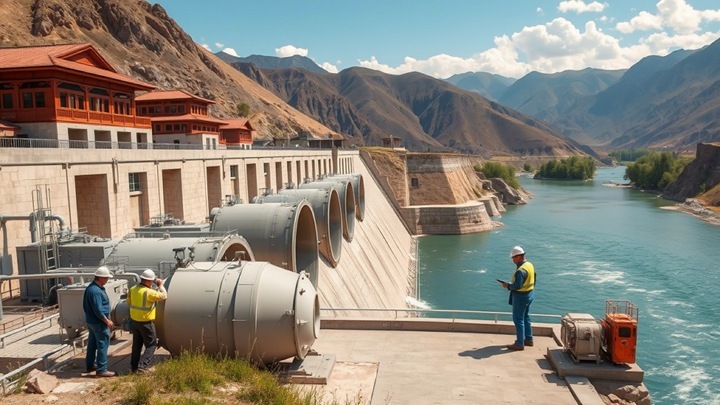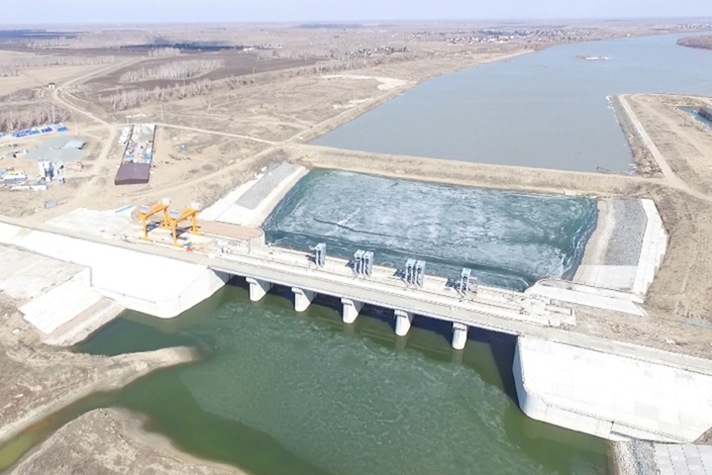New hydropower plants of Kyrgyzstan: energy capacity, environmental risks
Kyrgyzstan is actively increasing its hydropower potential, positioning this area as the basis for sustainable development and the path to “green” energy. As the Minister of Energy Taalaibek Ibrayev said at the 9th International Congress “Hydropower Central Asia and the Caspian 2025” in Bishkek, the country has the opportunity to build a hydroelectric power station with a total output of up to 142 billion kWh. According to him, the use of this potential has already increased from 10% in 2020 to 15% now, with special attention being paid to small hydropower plants, whose capacity is planned to increase from the current 48-50 MW to 400-500 MW by 2027-2028.

Officially, hydropower is proclaimed a strategic direction designed to ensure energy security, economic growth and compliance with international environmental standards. The Minister of Energy stressed that in 2024, about 90% of all electricity in the country was generated by hydroelectric power plants, and this sector will only expand against the background of the growing needs of the region. Reforms are being implemented to attract investment, existing stations are being modernized and new ones are being built, including renewable energy facilities such as solar and wind power plants implemented through the public-private partnership (PPP) mechanism.
However, behind the ambitious plans and statements about “clean green energy” there are serious challenges and potential risks of concern. Shakir Saidov, General Director of Chakan HPP OJSC, admitted at the same congress that the deterioration of equipment at the company’s operating small HPPs reaches 80-90%. This not only reduces production efficiency, but also carries man-made and environmental threats, requiring the attraction of significant funds from international donors for modernization.
The desire for a rapid increase in capacity also raises questions about the quality of planning and environmental impact assessment. Director of the PPP Center Nurbek Anarbekin noted that, despite discussions with the Ministry of Energy on the need to prepare high-quality feasibility studies (feasibility studies), pre-feasibility studies and master plans for future projects, “this remains at the stage of discussions.” The delay in the preparation and selection of sites for the construction of hydropower plants, as well as the promise in the future to “fully prepare sites for investors”, may indicate the risk of accelerated implementation of projects without proper environmental expertise.
Meanwhile, the construction of new hydropower facilities in Kyrgyzstan is in full swing. By the end of 2025, it is planned to commission several small hydropower plants in Issyk-Kul, Chui and Jalal-Abad regions with a total capacity of about 15 MW. The Boz-Uchuk hydroelectric power plants (5.4 MW), Aksu (4 MW) and Issyk-Ata 2 (4.5 MW) are at the final stage. The Ministry of Energy predicts that only private small hydropower plants will produce 600 million kW in 2025.In total, it is planned to introduce 18 such stations with a total capacity of 64.2 MW.
Along with small hydropower plants, large projects are also being implemented. Particular attention is drawn to the Kazarmansky cascade of hydroelectric power plants on the Naryn River, which includes four hydroelectric power plants with a total capacity of 1120 MW. According to Mukhammet Haluk Sur, General Director of Central Asian Investment Holding OJSC, the company is at the final stage of concluding an investment agreement. The project includes the construction of the Ala-Buga hydroelectric power station (600 MW with a dam height of 220 m), Kara-Bulun-1 (149 MW) and Kara-Bulun-2 (163 MW). The scale of these structures will inevitably entail a significant anthropogenic impact on river ecosystems and adjacent territories.
The economic incentive for increasing generation is not only domestic demand, but also export opportunities. As part of the CASA-1000 project, Kyrgyzstan plans to export 1.5 billion kW annually from May to September.h of electricity to Afghanistan (8 cents per kW.and Pakistan (at 9 cents per kWh), where there is a shortage of energy in the summer. This creates additional pressure on the power grid and stimulates the accelerated construction of new capacities.
The law on renewable energy Sources (RES) is in force in Kyrgyzstan to regulate the industry. According to the amendments of 2024, a tariff of 4.42 soms per 1 kWh is set for new HPPs, while for old stations it remains at 2.62 soms. Shakir Saidov, General Director of Chakan HPP, said that the possibility of concluding contracts in foreign currency is being discussed in order to avoid tariff indexation, which also emphasizes the desire to attract external investors. However, it remains an open question to what extent the existing tariffs and legislation of Kyrgyzstan stimulate not only construction, but also compliance with strict environmental standards and timely modernization of outdated equipment.
Thus, the hydropower boom in Kyrgyzstan carries both prospects for strengthening energy independence and obtaining export revenues, as well as serious risks. The deterioration of the existing infrastructure, potential problems with the quality of planning and environmental impact assessment of new, especially large, hydropower projects, as well as interference in river ecosystems themselves require close public attention and a responsible approach on the part of authorities and investors so that the pursuit of kilowatt-hours does not result in irreversible damage to the unique nature of Kyrgyzstan.
Alexander Eskendirov (Rivers.Help!)


